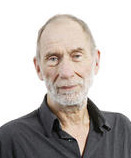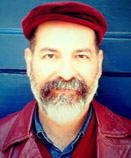Since the invention of the computer, artists have sought ways to fuse the traditional arts and emerging digital tools, and after 50 years of varying forms of computer art, a new extension of art history has taken shape.
On Monday, computer art pioneer Frieder Nake will discuss “Algorithmics and Aesthetics — On Digital Images,” as part of the newly created Ad Astra Lecture Series: Art, Architecture, Science, Technology Research Alliance. The series is part of the efforts of UT Dallas’ Edith O’Donnell Institute of Art History.

Frieder Nake
Nake, a mathematician, is professor of interactive computer graphics and digital media at The University of Bremen and The University of the Arts Bremen, Germany. His lecture, which will be at 4 p.m. in TI Auditorium, ECSS 2.102, and will focus on how digital art has changed over time.
“Computer art established itself as a very special aspect of conceptual art,” said Nake, a recent nominee for the Visionary Pioneer of Media Art award of Prix Ars Electronica.
“Only with interactive art, however, digital art gained enough autonomy and started formulating its own aesthetic questions. We will take a look at generative aesthetics, and show some, perhaps surprising, connections to the broad stream of art history.”
Named after the Latin phrase ad astra, meaning “to the stars,” the Ad Astra Lecture Series takes its energies from the utopian vision of the ancient past.

Luciano Chessa
Under the direction of Dr. Charissa N. Terranova, associate professor of aesthetic studies, the series features emerging and established practitioners from art, science and technology with a goal of expanding art history.
“With its strong grounding in science and technology, UT Dallas is uniquely poised to expand and take the field of art history in new directions,” she said. “The series builds on the unique expertise of its faculty — in impressionism, post-impressionism, the Renaissance and early modern cartography, big data, complex systems, and biology in the history of art and architecture — in creating a new landscape of art, science and technology united.
“Art history done in ‘UTD fashion’ means bold reciprocity: an art history that benefits from the manifold precepts and utilitarian practices of science and engineering labs and, vice versa, science and engineering programs that sharpen skills of abstract and critical thinking through interaction with the humanists of art history.”
Ad Astra Lecture Series
The series will continue during the spring semester. Times, locations and more details will come later. Here are the scheduled speakers:
Jan. 14, 2015: Sean B. Carroll, award-winning scientist, writer, educator and film producer, will present “Jacques Monod and Albert Camus: A Scientist’s and a Philosopher’s Daring Adventures from the French Resistance to the Nobel Prize.”
March 7-8, 2015: Sophia Roosth, assistant professor, history of science, Harvard University, will give talks on synthetic biology as part of Ad Astra, RAW (the Arts & Humanities Graduate Student Association annual conference) and the Arts and Technology Colloquia. Roosth’s research focuses on the 20th- and 21st-century life sciences.
The second lecture in the series will also be next week. Luciano Chessa will present “Music the Dead Can Hear: Theosophical Presences in Luigi Russolo’s Art of Noises” at 3 p.m. Thursday in the Edith O’Donnell Arts and Technology Building, Room 3.805B.
Chessa, musicologist, composer, performer and professor at the San Francisco Conservatory of Music, is the author of Luigi Russolo, Futurist: Noise, Visual Arts, and the Occult. His book and lecture present a new interpretation of the mechanical sound synthesizers that painter and musician Russolo created beginning in 1913.
Chessa, along with other Italian scholars, has established the prominence of the occult in early 20th-century Italian culture. There it operated in tandem with contemporary scientific ideas about X-rays and wireless telegraphy — all with an emphasis on waves and vibrations and their new communicative potential. Chessa argues that Russolo’s multileveled experiments were designed to reach higher states of spiritual consciousness.
Both lectures are free and open to the public.